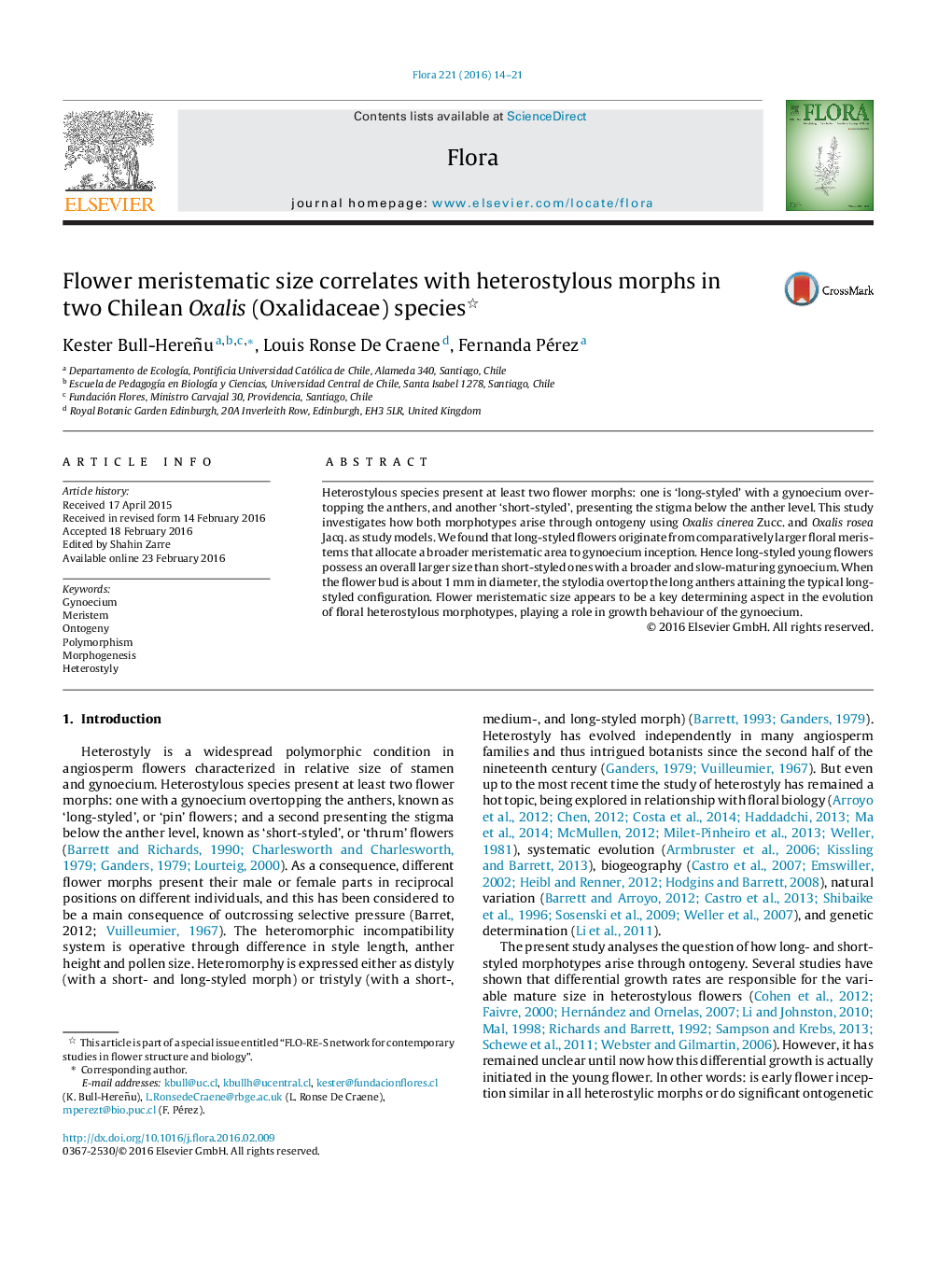| Article ID | Journal | Published Year | Pages | File Type |
|---|---|---|---|---|
| 2179354 | Flora - Morphology, Distribution, Functional Ecology of Plants | 2016 | 8 Pages |
•Long-styled flowers in Oxalis originate from comparatively larger floral meristems.•Long-styled flower buds allocate a larger meristematic area to gynoecium inception.•Long-styled gynoecia are thicker and differentiate slower than short-styled ones.
Heterostylous species present at least two flower morphs: one is ‘long-styled’ with a gynoecium overtopping the anthers, and another ‘short-styled', presenting the stigma below the anther level. This study investigates how both morphotypes arise through ontogeny using Oxalis cinerea Zucc. and Oxalis rosea Jacq. as study models. We found that long-styled flowers originate from comparatively larger floral meristems that allocate a broader meristematic area to gynoecium inception. Hence long-styled young flowers possess an overall larger size than short-styled ones with a broader and slow-maturing gynoecium. When the flower bud is about 1 mm in diameter, the stylodia overtop the long anthers attaining the typical long-styled configuration. Flower meristematic size appears to be a key determining aspect in the evolution of floral heterostylous morphotypes, playing a role in growth behaviour of the gynoecium.
